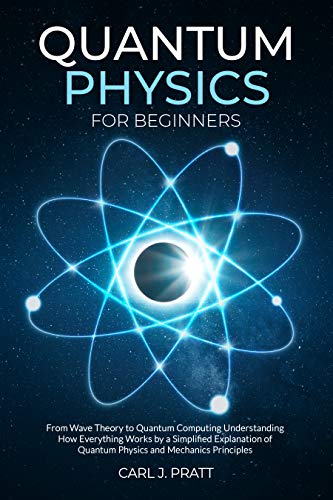Quantum Field Theory (QFT) stands as a towering edifice in the realm of theoretical physics—a formidable construct that deftly unifies the principles of quantum mechanics with the intricacies of special relativity. Among the multitude of texts that seek to elucidate this intricate tapestry, one book in particular has garnered the reputation of being the most challenging. This work, often held up as a rite of passage for aspiring physicists, encapsulates the quintessence of complexity, yet retains a magnetic allure. The text in question, while daunting, unfurls a wealth of knowledge that remains indispensable to serious scholars and practitioners in the field.
As one embarks on this intellectual odyssey, the arduous nature of the text reveals itself through its abstract mathematical formulations and dense conceptual frameworks. For many, delving into its pages is akin to wading through a dense fog—one that, once penetrated, reveals unparalleled vistas of understanding and insight. The primary challenge lies in its demand for rigorous mathematical acuity and a profound grasp of preceding theories. The necessity of a solid grounding in linear algebra, calculus, and classical field theories becomes manifest. Such a preparatory journey can feel like an initiation rite; each equation serves as both a barrier and a gateway.
One of the hallmarks of this seminal work is its penchant for utilizing mathematical symbolism to convey profound physical ideas. The language of quantum fields is replete with arcane notations—operators, commutation relations, and Feynman diagrams coalesce into a visual symphony representing complex interactions. At first blush, this may seem impenetrable, yet it is precisely within this language that the beauty of quantum interactions is elucidated. Those who dare to engage with the text are often rewarded not only with understanding but with an appreciation for the elegance of the universe’s fundamental workings.
Intriguingly, this book does not merely serve as a passive repository of knowledge; rather, it acts as a mentor, proffering challenges that compel the reader to venture deeper. The text’s structure often mirrors the path of discovery itself, leading the reader through an intricate labyrinth of concepts—each twist and turn uncovering new realms of thought. It invites its scholars to grapple with divergent ideas, such as the nature of virtual particles, the role of symmetries, and the subtleties of gauge theories. Each chapter is a living entity, evolving and adapting, as readers punctuate their journeys with questions that ignite further investigation.
The unique appeal of this difficult expanse lies not merely in its content but in the communal experience it fosters. Students and researchers often find themselves banding together, embarking on what can feel like a collective pilgrimage. Online forums and discussion groups flourish, where individuals share their interpretations, insights, and frustrations. This camaraderie transforms a solitary endeavor into a shared conquest, underscoring the idea that knowledge, particularly in a field as daunting as QFT, is not merely an isolated achievement but a collective triumph that reinforces the fabric of scientific discourse.
Furthermore, the struggle to decode its lessons cultivates a resilient mindset. Each painstaking derivation provides not just an answer but the honing of critical thinking skills. Such perseverance becomes a transformative experience, pushing individuals to expand their intellectual limits and develop a capacity for abstract reasoning. In this sense, the hardest book on quantum field theory serves as a crucible for intellectual growth, shaping its aspirants into adept physicists prepared to face the universe’s enigmatic questions.
Moreover, the persistent engagement with challenging literature imbues one with a profound respect for the field. Quantum Field Theory, a conduit through which researchers probe the most fundamental questions of existence, elucidates the fractal nature of reality—the idea that the intricate behaviors witnessed at the quantum scale reverberate through the cosmos. The very act of wrestling with the complexities within this tome instills a recognition of the intricate interplay between theory and physical reality.
As one reflects on the utility of this challenging book, it becomes incontrovertibly clear that the quest for knowledge is inherently arduous. Yet, within that challenge lies an intrinsic beauty—the beauty of enlightenment through struggle. Each page turned is a step taken in the dance of intellectual exploration, underscoring the notion that every endeavor fraught with difficulty ultimately serves to elevate our understanding. Hence, the hardest book on Quantum Field Theory remains not only relevant but essential, a beacon calling forth those who dare to navigate its stormy seas, promising profound revelations waiting to be unearthed.
In conclusion, despite its formidable reputation, the arduous journey through this text proves to be a rewarding and enlightening experience. It invites those who venture within to traverse the boundaries of their understanding, unveiling profound insights into the nature of reality. The complex mathematical frameworks, the communal struggle, and the resultant intellectual resilience coalesce to illuminate why, even amidst the challenges it presents, we still turn to this most difficult of tomes on Quantum Field Theory with reverence and respect. For in its pages lie the very fabric of the universe, waiting for the astute, the courageous, and the curious to unravel its mysteries.








